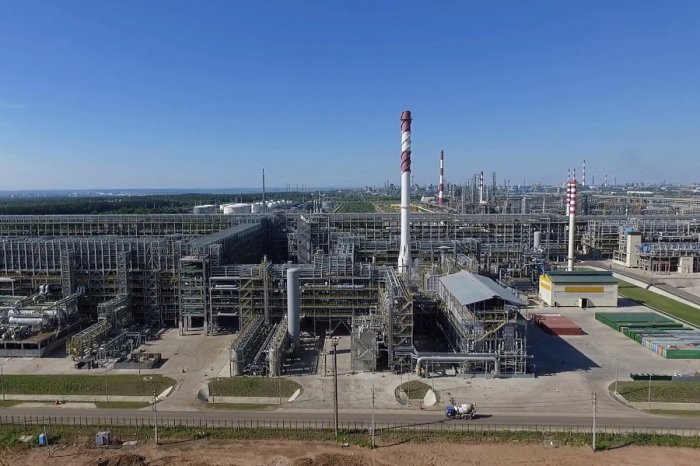To consider an application for financing, fill out the form and send it to us by e-mail along with the project brief, or contact our experts
With the current wide offer of financial institutions and stock markets, companies can choose the most suitable options for financing planned large investments, depending on the needs of a particular project.
Choosing the right project finance or corporate finance options requires a deep understanding of their principles, advantages and disadvantages.
Are you looking for a reliable partner for a new project?
Link Bridge Financial LTDA LBFL offers a wide range of services for large businesses, including long-term loans, project finance services (including SPV establishment), financial modeling, guarantees, investment consulting and more.
Two approaches to financing investments
Doing business in a highly competitive market economy requires decision makers to keep pace with changes in the financial environment.This volatility is the result of a number of factors, such as the decisions of the major players, changes in legislation, economic transformations, political factors, energy prices, etc.
Against this background, the ability to generate realistic forecasts and choose the most appropriate financial instruments is of great importance for the survival of any business, the success of its investment projects and obtaining the necessary funding. Mistakes made during the planning an investment project can lead to critical problems at later stages, which is fraught with financial and reputational losses.
Thanks to globalization, digitalization and the increasing influence of financial markets on the real economy, many important business processes are becoming faster and more complex. At the same time, the influence of various macro-financial, economic, political and market events on all aspects of investment activity is increasing.
As a result, it becomes increasingly difficult to make investment decisions and build forecasts and financial models for them.
The ability of business to accumulate capital to finance investment projects directly depends both on their financial health and creditworthiness, and on the development of the financial market, which means access to various sources of financing.
Since large investment projects are often worth much more than the value of participating companies, such projects are rarely funded entirely by equity capital. This is where debt financing becomes necessary. Commercial banks play a dominant role as funding sources in this regard. International financial institutions (Inter-American Development Bank, European Bank for Reconstruction and Development) can act as other sources of financing for large projects.
Companies are also actively attracting resources in the financial markets in the form of bond issues.
The approach to financing an investment project should be closely related to its specifics. In practice, experts identify such fundamentally different approaches to investment as project finance and corporate finance.
Project finance vs corporate finance in investment activities
In the case of project finance, the investment project is carried out as part of a separate special purpose vehicle (SPV), ie a formally independent legal entity with a short operating history and a clearly defined business potential.Investment projects implemented under this formula are usually characterized by a high level of financial leverage due to the use of external financing, usually in the form of a long-term bank loan (a syndicated loan for capital-intensive projects).
Since the source of repayment of loans taken by a special purpose vehicle is cash flows that will be generated in the future, these flows should be the main area of analysis for projects when making financial decisions. The basis for calculating project parameters will be indicators such as net present value (NPV), internal rate of return (IRR) and debt service coverage ratio (DSCR).
In this approach, debt financing is secured by assets created as a result of the project, or by the assignment of future receivables based on the forecast of the project.
Project finance schemes are usually used to finance large projects that are legally and financially “independent”.
The required degree of self-sustainability is ensured by the establishment of an SPV, which attracts capital and is fully responsible for the project's debts.
Usually these are new projects (for example, a new solar power plant or an LNG terminal) and are no longer operating within the framework of the previous activity of the enterprise. This approach is also characterized by a high debt-to-equity ratio, as debt arising from project finance can cover up to 90% of project costs. This means that the real financial contribution of the initiators may be limited to only 10% of the project cost.

In accordance with the principles of project finance, sponsors do not provide guarantees under SPV (non-recourse financing) or provide limited guarantees (limited recourse financing). This significantly increases the risk for potential lenders and requires an in-depth study of the potential weaknesses of the project before making a decision to participate.
Lenders should be guided by the following considerations:
• It is important to evaluate the ability of SPV to repay principal and interest (debt service) based on the future cash flows generated by the project, and not on the value of its assets or historical financial results, which are not available.
• Debt in project finance can be secured by SPV assets (including land and expensive equipment), licenses obtained by it, mining rights, technologies, etc.
• The project must be operated for a certain period, which depends on factors such as the duration of contracts and licenses, the amount of natural resources available and the expected market situation. Therefore, the debt must be repaid before the end of this period.
This approach to financing investment projects has many benefits from a sponsor's point of view, including those listed in the table below.
Table: Some benefits of project finance schemes for sponsors.
| Benefits for sponsors | Brief description |
| Risk diversification | Due to the high share of debt capital in the financing structure, the accompanying risk is borne not only by the project sponsor, but also by financial institutions. |
| The off-balance sheet nature of the debt |
If the loan is taken by a special purpose vehicle, it does not burden the sponsor's balance sheet and this will be seen in the sponsor's consolidated financial statements. |
| Increased creditworthiness | By separating an investment projectwith all its debts and risks into a separate structure, a higher level of debt financing can be achieved. |
| Flexibility of financing | Specific financing terms and conditions are always adjusted to the project needs through multi-stage negotiations. |
| Tax optimization | Tax benefits of PF schemes are dependent on the type and scale of the project, financial structure, the specifics of the sponsors' business activity and the laws of the host country. |
There are also negative aspects of project finance that should be taken into account when planning projects and choosing financial instruments:
• Higher financial costs: Due to the higher risk, banks expect a higher margin on the funds provided (sometimes this financing is 20-30% more expensive than a traditional investment loan).
• The complexity of project documentation, which is time consuming and requires the involvement of a highly qualified legal team.
• Intervention of the lender in the planning and management of the project.
• Difficulty and lengthy negotiations.
In comparison, the corporate finance formula usually refers to the implementation of an investment project based on an existing business entity with an operating history, adequate assets, and an established funding structure.
In this case, the originating company is directly responsible for all project debts.
Accordingly, a special purpose vehicle is not established, so the risk of the project is directly related to the risk of the originator arising from its current activities.

On the one hand, risk is not separated from the core business activity. On the other hand, there is an increase in the level of debt and financial costs. Capital providers, as in project finance, seek to gain control over operations, in particular through clauses that limit the scope of actions taken, the prohibition of certain actions or the obligation of the borrower to perform certain actions.
Table: Some of the basic features of investment projects implemented in the project finance and corporate finance formula
| Features | Project finance | Corporate finance |
| Establishing a new company |
+
|
-
|
| Financing without recourse to the project sponsor |
+
|
-
|
| Financing with recourse to the project sponsor |
-
|
+
|
| Diversification of risk from the point of view of the project sponsor |
+
|
-
|
| Financing costs are higher compared to traditional loans |
+
|
-
|
| Priority attention on assessing the creditworthiness of the originator |
-
|
+
|
| Priority attention on assessing the creditworthiness of the project |
+
|
-
|
| Increasing the creditworthiness of sponsors |
+
|
-
|
| Off-balance sheet nature of debt |
+
|
-
|
| Significant intervention of capital providers in project management |
+
|
-
|
| Greatest tax optimization opportunities |
+
|
-
|
Regardless of the formula for financing an investment project, the finance team should consider the following questions:
• The choice of the source of funds determines the cost of capital, and also has irreversible consequences for the subsequent management of the project.
• The cost of debt financing is usually lower than internal resources, and the risk of the lender is lower than the risk of the owner in case of failure of projects; in addition, there is also a tax shield effect.
• A kind of limit to the economic rationality of using capital from external sources to finance investments is the profitability of the company's assets.
• Low market interest rates, high yields, and moderate industry risk generally favor the use of financial leverage and debt financing.

Linking an investment project with the rest of the company's activities has numerous advantages.
If necessary, the company can support its project with additional funds generated as part of current activities. However, the risks associated with the overall operation of the company should also be taken into account.
The table above compares the main characteristics of investment projects implemented using the project finance and corporate finance schemes.
Risks in corporate finance and project finance
Regardless of the type of investment project being planned, as well as the approach to financing (project finance or corporate finance), companies are exposed to numerous risks.In general, the risks of investment projects can be classified into three categories listed below:
1. Economic risk, sometimes referred to as project risk: This type of risk is directly related to the project itself or its market environment.
2. Macroeconomic risk: this is the risk associated with external economic events not directly related to the project (ie inflation, interest rates, exchange rates).
3. Political risk, also called country risk or regulatory risk: this is a wide range of risks related to the government policies or force majeure events of a political or geopolitical nature, such as war or social unrest (this is a particularly important category when the project involves foreign investment).
Recent studies and international investment practice show that macroeconomic risk has become particularly problematic in recent years (apart from geopolitical risk, which is very difficult to assess).
This type of risk includes two interrelated areas, each of which deserves the close attention of the project team:
• The risk of properly specifying financial forecast assumptions relative to the pre-investment stage (including feasibility study, business plan).
• A purely macroeconomic risk in relation to the entire investment process, ie from the pre-investment phase to the launch and operation.
The risk of correct interpretation of financial forecasts can be explained by the fact that it is almost impossible to develop a reliable assessment of an investment project without drawing up a business plan. At the same time, each business plan must contain financial forecasts in the form of a balance sheet, income statement and cash flow statement for the planned period of financing from external sources.
The test of the feasibility of financial forecasts consists in evaluating numerous assumptions.
The general approach to assessing macroeconomic and geopolitical risk in project finance and corporate finance differs little.
It is important to pay close attention to the following aspects, which may pose a risk to the investment forecasts:
• Macroeconomic assumptions: techniques for forecasting exchange rates, future interest rates, inflation, GDP growth and tax rates.
• Market assumptions: in the case of construction, for example, commercial real estate, these may be rental rates, occupancy, payback period, and others.
• Economic assumptions: account receivable cycles, liabilities and reserves, level of operating costs.
In this case, the following methods of risk reduction are applied:
1. Checking assumptions based on historical data (if available); substantiation of the accepted assumptions and assessment of their suitability for a new project.
2. Opening a Debt Service Reserve Account (DSRA) within the framework of the project implemented in the project finance formula; this account must receive cash surpluses above the level specified in the loan agreement, achieving a sufficient balance for, for example, 6-, or 12-month debt service.

Macroeconomic risk is closely related to the inappropriate assessment of financial forecasts.
It refers both to the period before the start of the investment project, and can manifest itself during the commissioning of the facility or during its operation. Even the most conservative approach used at the stage of developing financial forecasts should be based on reliable assumptions about future economic conditions.
However, no expert can foresee all possible scenarios for the development of the macroeconomic situation in the host country or abroad.
For example, a sharp strengthening of the exchange rate or a change in central bank interest rates is not ruled out, which could not be expected using the principle of prudence when building financial forecasts. Sometimes the macroeconomic risk is analyzed simultaneously with the political risk and the risk of the stability of the economic system.
New processes in the global economy lead to an increase in project risks, as a result of which it is increasingly difficult for business entities to plan and implement large investment projects.
Growing uncertainty also complicates the choice of how projects will be financed.
Attracting significant financial resources with a rational distribution of project risks among the participants makes the concept of project finance (PF) more preferable for sponsors compared to traditional corporate finance mechanisms, despite the lower cost of the latter.
Regardless of the choice of financial instruments, project teams need to be careful when developing forecasts, properly manage risks, and maintain project flexibility in case of changes in the external environment.
If you need professional assistance, contact the official representative of Link Bridge Financial LTDA LBFL and order a preliminary consultation at any convenient time.




























